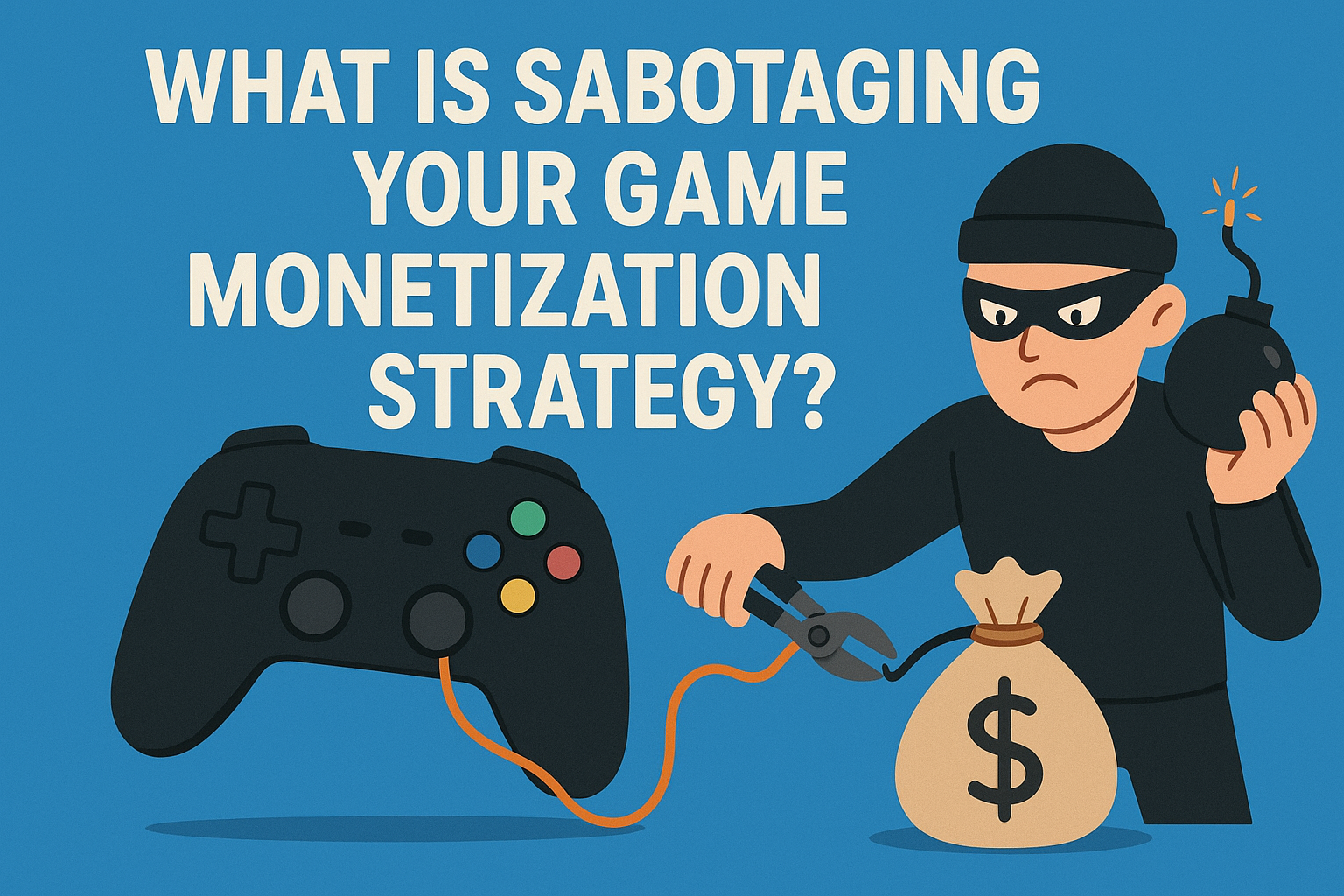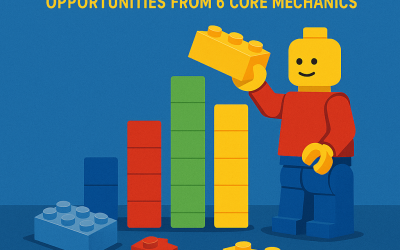What is Sabotaging Your Game Monetization Strategy?
In today’s competitive gaming landscape, developers constantly seek ways to transform their creative passion into sustainable profit. While most focus on implementing rewarded videos, in-game advertising, and offerwalls, they often overlook a critical element that can make or break their monetization efforts: player trust and experience continuity. This overlooked factor doesn’t just undermine ad revenue—it actively damages player retention and long-term profitability.
Contents
- 1 The Foundation of Profitable Monetization: Player Trust
- 2 Revenue Versus Value: Understanding the Real Equation
- 3 Maximizing Rewarded Video Performance Through Trust
- 4 Strategic In-Game Advertising Implementation
- 5 Web Monetization: The Overlooked Opportunity
- 6 Incentivized Ads and Offerwalls: Walking the Trust Line
- 7 Balancing Critical Metrics for Long-Term Success
- 8 Psychological Touchpoints That Build Trust
- 9 Implementing Trust-Focused Monetization in Unity
- 10 Measuring Trust Impact Through Revenue Analytics
- 11 Avoiding Common Trust-Breaking Mistakes
- 12 Expanding Revenue Through Trusted Strategies
- 13 Building Authority Through Content Marketing
- 14 AppLixir Rewarded Video Ads
The Foundation of Profitable Monetization: Player Trust
When players feel respected and valued, they naturally engage more deeply with your game. This deeper engagement translates directly into longer play sessions, which in turn drives higher ARPDAU (average revenue per daily active user) and improved LTV (lifetime value). The relationship is straightforward yet profound: trust breeds engagement, and engagement generates revenue.
Consider rewarded videos as an example. These ad formats work best when players genuinely choose to watch them in exchange for meaningful benefits. However, when players feel manipulated or misled, they don’t just skip ads—they abandon your game entirely. This exodus devastates both your app monetization efforts and your mobile game ads revenue potential. Trust functions as an invisible currency that unlocks the full potential of monetization platforms like AdMob Rewarded Ads, demand-side platforms, and video monetization systems. Without this foundation of trust, even high-paying CPM video ads will consistently underperform expectations.
Revenue Versus Value: Understanding the Real Equation
While revenue metrics like CPM, eCPM, and ARPDAU provide important insights, they don’t reveal the complete picture of your monetization health. A purely revenue-focused strategy might inflate short-term gains, but it inevitably reduces long-term retention and gaming engagement.
This short-sighted approach manifests in several destructive ways. Forced interstitials might spike immediate revenue but often reduce overall ARPDAU as players exit their gaming sessions prematurely. Non-relevant reward videos decrease click-through rates as players learn to skip or abandon them entirely. Poor offerwall offers with misleading descriptions systematically erode the trust that underpins all successful monetization.
The most effective monetization strategies balance ad frequency with player experience quality. Trust grows when players feel they have genuine choice in their ad interactions. This voluntary engagement creates a positive feedback loop that drives both higher retention rates and sustained revenue growth over time.
Maximizing Rewarded Video Performance Through Trust
Rewarded videos consistently rank among the most efficient ad formats available to game developers. AdMob Rewarded Ads, in particular, offer promising eCPM potential while maintaining player control over the viewing experience. However, misuse of this format can quickly undermine its value.
Common sabotage tactics include prompting players too frequently, offering poor or irrelevant rewards, and using misleading interface elements like deceptive “continue” buttons. While these approaches might seem like clever ad monetization techniques, they actually make players feel manipulated and destroy your game’s credibility. This damage extends beyond individual player relationships to affect your standing with demand-side platform partners.
A trust-first approach requires more thoughtful implementation. Keep reward video frequency logical by offering them sparingly and at appropriate moments. Match your rewards to the value proposition—a 30-second video should provide substantial in-game benefits that players genuinely appreciate. Most importantly, maintain complete transparency by clearly marking ads as optional and displaying real rewards upfront. Players who trust your monetization approach will voluntarily rewatch rewarded videos repeatedly, creating a sustainable cycle that naturally increases both CPM and ARPDAU metrics.
Strategic In-Game Advertising Implementation
In-game advertising presents significant opportunities when implemented thoughtfully, but improper execution can severely damage the player experience. Intrusive ads that appear during critical gameplay moments disrupt the natural flow that keeps players engaged. Similarly, ads triggered immediately after game over screens can feel like adding insult to injury, while poorly placed cross-promotional banners between levels often register as spam in players’ minds.
Better ad monetization through trust requires careful attention to placement timing, contextual relevance, and reward integration. Show interstitials during natural breaks in gameplay rather than interrupting intense moments. Ensure ads fit your game’s style and thematic elements. Most importantly, give players the choice to view additional content in exchange for meaningful in-game perks. By seamlessly blending advertisements into the player journey, you demonstrate respect for engagement quality. This approach fosters longer gaming sessions, improves retention rates, and ultimately delivers better eCPM performance across your ad inventory.
Web Monetization: The Overlooked Opportunity
Web monetization for browser-based games opens entirely new revenue streams beyond traditional mobile approaches, yet most developers completely ignore this potential. Web monetization systems like Coil create streaming payment mechanisms where players contribute small amounts per second of engagement in exchange for premium content or enhanced features.
The hidden sabotage in web monetization typically occurs when developers focus solely on platform-specific formats instead of human-centered approaches. They miss opportunities to integrate web monetization naturally into gameplay mechanics and rely exclusively on banner ads or rewarded videos for HTML5 game monetization.
Successful web monetization implementation uses micropayment tools to reward users with bonus content, exclusive in-game items, or premium cosmetic options. Clear communication helps players understand the value exchange, such as “Every 30 seconds of support unlocks a free gameplay hint.” Trust remains fundamental in web monetization success. When players understand they’re paying for enhanced value rather than basic functionality, they willingly participate in the economic relationship that sustains your game’s development.
Incentivized Ads and Offerwalls: Walking the Trust Line
Incentivized ads and offerwalls can generate excellent results when properly implemented. These formats engage players in completing specific tasks to earn rewards, often converting well in terms of both CPM and ARPDAU metrics. However, success requires careful balance and execution.
Common failures include overusing offerwalls to the point where they lose their special value, providing misleading descriptions where promised rewards don’t match reality, and offering low-quality tasks that make players feel exploited rather than rewarded. Walking the trust line successfully means curating high-quality offers from established demand-side partners, ensuring clear value in every exchange, and maintaining appropriate ratios between offerwall content and core gameplay. When implemented with transparency and genuine value, offerwall engagement provides players with optional monetization opportunities that increase both loyalty and long-term monetization sustainability.
Balancing Critical Metrics for Long-Term Success
Achieving sustainable monetization requires balancing three critical elements: ARPDAU through frequent but respectful ad exposure, LTV through long-term retention and positive user sentiment, and player experience through uninterrupted flow and fair reward systems. The temptation to maximize short-term ARPDAU through aggressive ad placement often backfires spectacularly. While ad frequency might spike immediate revenue, the resulting user drop-off devastates LTV calculations. This hidden sabotage lies in ignoring the delicate balance between immediate revenue targets and tomorrow’s audience retention.
Psychological Touchpoints That Build Trust
Winning player trust requires attention to specific psychological touchpoints throughout the user experience. Entry transitions work better when they present menu prompts like “Watch to double XP?” instead of forcing immediate ad exposure. Reward visibility improves when players can preview benefits clearly before committing to watch rewarded videos.
Timing and context matter enormously—roll interstitials only during natural pauses in gameplay flow. Feedback and gratitude elements, such as thanking players for watching and confirming their rewards, reinforce positive associations with your monetization system. Settings control options that let users adjust their ad experience, including opt-out capabilities and frequency reduction, demonstrate respect for player preferences.
These seemingly small details shape player perception in profound ways. They build trust systematically and create the foundation for sustained monetization returns.
Implementing Trust-Focused Monetization in Unity
Unity Monetization and Unity Rewarded Ads provide powerful development tools for trust-first implementation. Integrate rewarded videos with discretion by placing them in clear UI triggers that players can easily understand and choose to engage with. Test the relationship between eCPM and frequency by adjusting ad show rates based on player retention metrics rather than pure revenue optimization. Add transparency through interface elements that clearly communicate value propositions, such as “Earn 100 coins by watching voluntarily.”
Dynamic reward systems that fetch values from remote configurations allow you to increase rewards during special events or specific timeframes. Monitor engagement through comprehensive tracking of click-through rates, completion rates, and retention metrics following monetization interactions. Rapid iteration through A/B testing helps refine ad frequency and placement based on actual player behavior rather than assumptions. Unity’s adaptive features enable dynamic responses to player preferences while maintaining the balance between player experience and ad revenue optimization.
Measuring Trust Impact Through Revenue Analytics
Ad revenue calculators provide quantitative methods for measuring the impact of trust-focused monetization changes. Key metrics include click-through rates, completion rates, eCPM performance, average impressions per session, and overall ARPDAU trends.
Comparing historical baselines with trust-focused implementations often reveals dramatic improvements. Click-through rates might increase from 4.5% to 7%, while completion rates jump from 60% to 80%. Even when eCPM remains constant, ARPDAU can rise by 30% or more due to increased voluntary engagement. These improvements compound over time, making simple ad revenue calculations reveal how player respect directly boosts monetization performance across all metrics that matter for long-term sustainability.
Avoiding Common Trust-Breaking Mistakes
Even experienced development teams make critical mistakes that undermine monetization trust. Misleading continue buttons that trick players into watching ads create immediate resentment. Unfair reward ratios, such as offering only 5 in-game coins for watching a full advertisement, signal disrespect for player time and attention.
Premature paywalls that gate essential content too early in the player journey often offend users who haven’t yet developed attachment to your game. Excessive forced interstitials interrupt natural gameplay flow and create frustration that drives abandonment. Poor ad network selection that delivers low CPM ads annoys players without providing meaningful revenue compensation.
Identifying and fixing these trust-breaking elements reverses the hidden sabotage that undermines monetization effectiveness across all other optimization efforts.
Expanding Revenue Through Trusted Strategies
Once you’ve established a stable foundation of player trust, numerous growth opportunities become available. Exclusive cosmetic content through web monetization creates premium value propositions. Strategic brand partnerships aligned with your game’s thematic elements can provide additional revenue without compromising player experience.
Timed monetization events, such as double-reward promotional periods, create excitement and engagement spikes. Smart layering of multiple ad formats—including offerwalls, rewarded videos, non-rewarded ads, and banner placements—maximizes revenue potential without overwhelming players. Loyalty programs that reward consistent players create long-term engagement incentives that support sustained monetization.
Each expansion initiative grows naturally from your established trust foundation, creating sustainable growth rather than short-term revenue spikes that damage long-term potential.
Building Authority Through Content Marketing
Your monetization strategy can support broader business goals through strategic content marketing. Blog content optimized for search terms like “game monetization,” “monetize your game,” and “rewarded video ads” positions your brand as an industry authority while driving organic traffic.
Comprehensive content that addresses common questions about monetization best practices, average CPM rates for video ads, and implementation strategies creates valuable resources for other developers while showcasing your expertise. Internal linking to calculators, case studies, and development tools builds a content ecosystem that supports both SEO goals and community engagement.
AppLixir Rewarded Video Ads
Player trust represents the hidden factor that can either sabotage or supercharge your game monetization efforts. Without this foundation, even the most sophisticated monetization tactics will fail to deliver sustainable results while actively damaging player retention and long-term revenue potential.
Building a balanced monetization model requires voluntary rewarded video systems with transparent rewards, timely and non-intrusive advertising placement, offerwalls that provide genuine value, web monetization integration for browser-based games, and data-driven ad frequency optimization based on player behavior rather than pure revenue metrics.
Success in modern game monetization comes from tools and strategies that measure and optimize the relationship between player satisfaction and revenue generation. This approach naturally boosts ARPDAU, LTV, and CPM metrics while creating the sustainable foundation necessary for long-term monetization success. The developers who understand and implement trust-first monetization will consistently outperform those who rely on aggressive tactics that prioritize short-term gains over sustainable player relationships.


